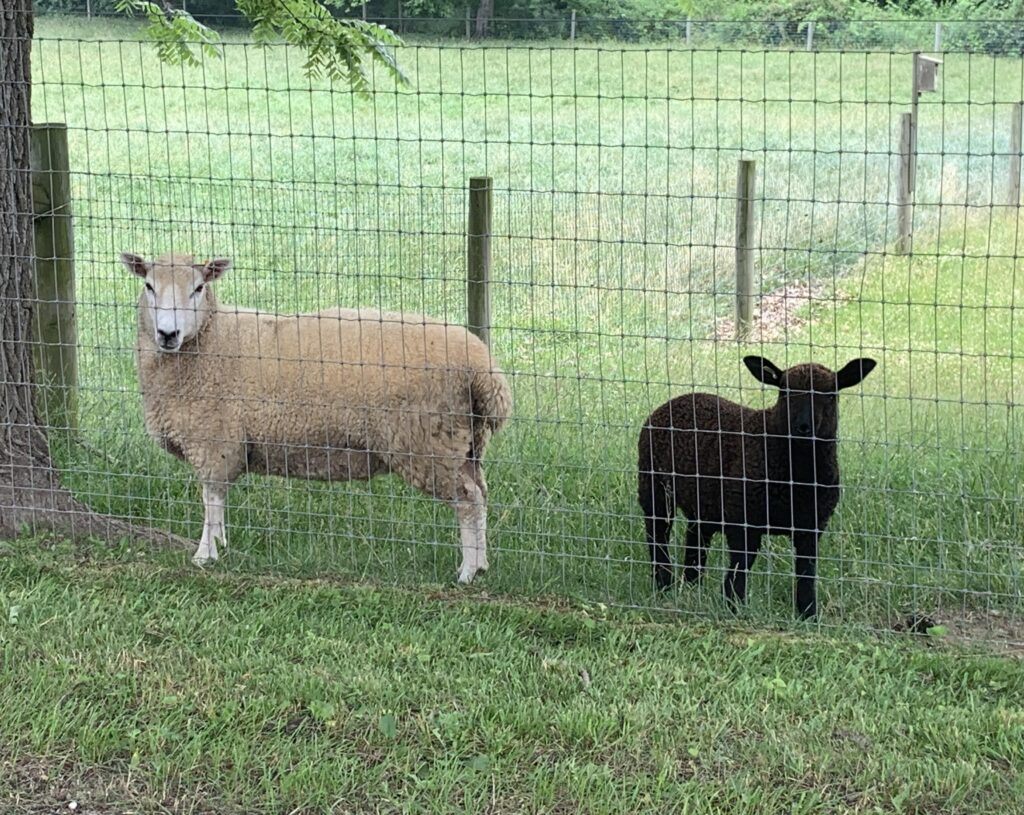Not every animal is worth breeding. This is especially true of rams, who contribute 50% of the genetics to your flock. We firmly believe that only the best of the best should be used for breeding. (One adult ram is capable of successfully breeding 100 ewes, so why not choose the best?). We compile a large quantity of data so that you can select the very best ram lambs for breeding that meet your criteria. We are reluctant to sell more than one or two ram lambs each year as breeding prospects.
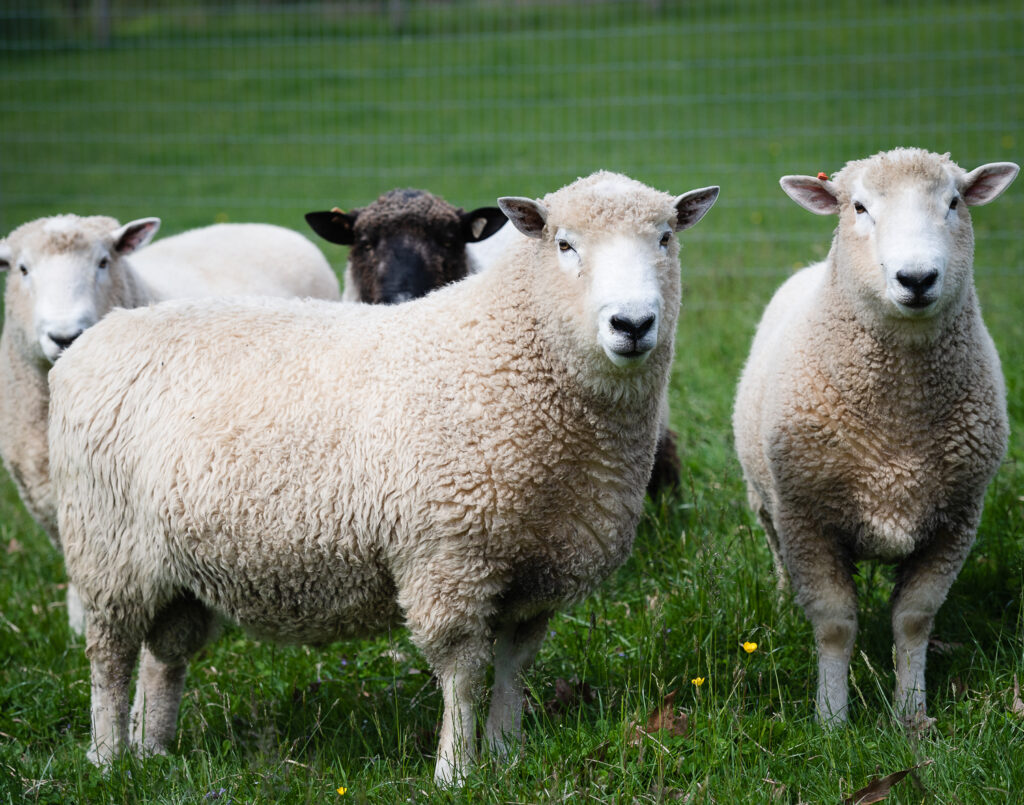
We offer ram lambs for breeding, ewe lambs, a few yearling ewes, and a very few experienced ewes each year. If demand exists, we will also offer wethered (neutered) ram lambs. All of our sheep (with the exception of wethers) are (or will be) registered with the North American Perendale Association (we send in pedigree requests in the fall, after we know which lambs will be used for breeding; there’s no point in paying for pedigrees for freezer lambs). Prices depend on gender, age, and when they’re collected (the longer we keep them, the more we have to charge; even if sheep are “only” consuming pasture, the more sheep we have, the less pasture we’re able to stockpile for the winter, and the more hay we have to buy – hay being our number 1 expense item). Details follow.
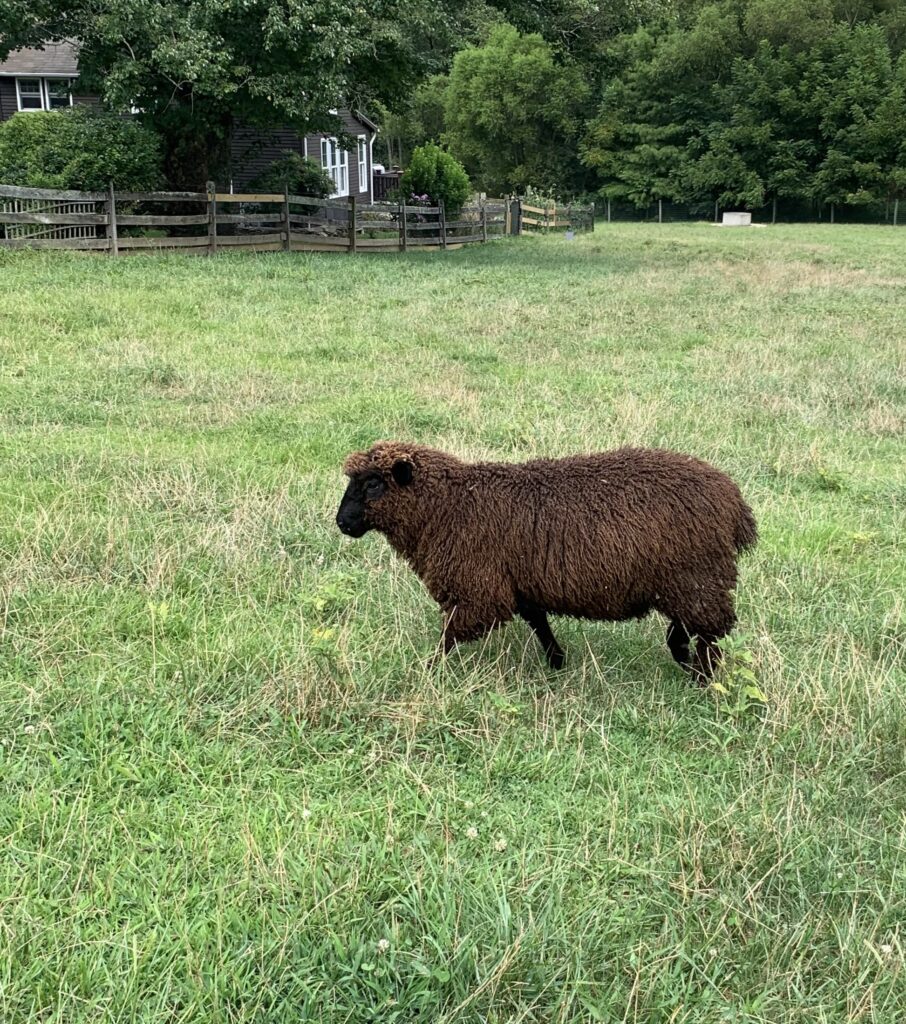
If you are interested in buying sheep from us, please contact us in the winter (ideally before we begin lambing in early March) to be placed on our email list. (We have been selling out our breeding stock each year). We will email everyone on our list in mid-March, once we have an idea of what we have on the ground. Be sure to indicate your preferences in priority order: age, gender, color, and whether you wish us to hold them for breeding in the fall. We will ask for $50 (non-refundable) deposits (per animal) by mid-June to hold your sheep until you can collect them.
Ram lambs for breeding. We try to provide abundant data on all of our ram lambs. We weigh each of our lambs (ram lambs as well as ewe lambs) at birth as well as each month. We use the results to compute average daily gain, as well as adjusted 60- and 100-day weights (the former is a measure of dam’s production of milk, while the latter reflects ability to grow on a grassfed diet). The “adjustment” factors account for differences in litter size (a parameter we also provide); it accounts for the fact that, other things being equal, triplets grow slower than twins, and twins grow slower than singles. Lambs produced by older ewes or yearling ewes often grow more slowly than lambs from ewes that are 2-6 years of age, also factored into the adjustment factors. Finally, ram lambs also grow more rapidly than wethers or ewe lambs, and the adjustment factors also take this into account.
For ram lambs born to ewes 3 years old and older, we also provide the dam’s “productivity” ranking, based on the cumulative adjusted 60-day weights, summed over a two-year period.
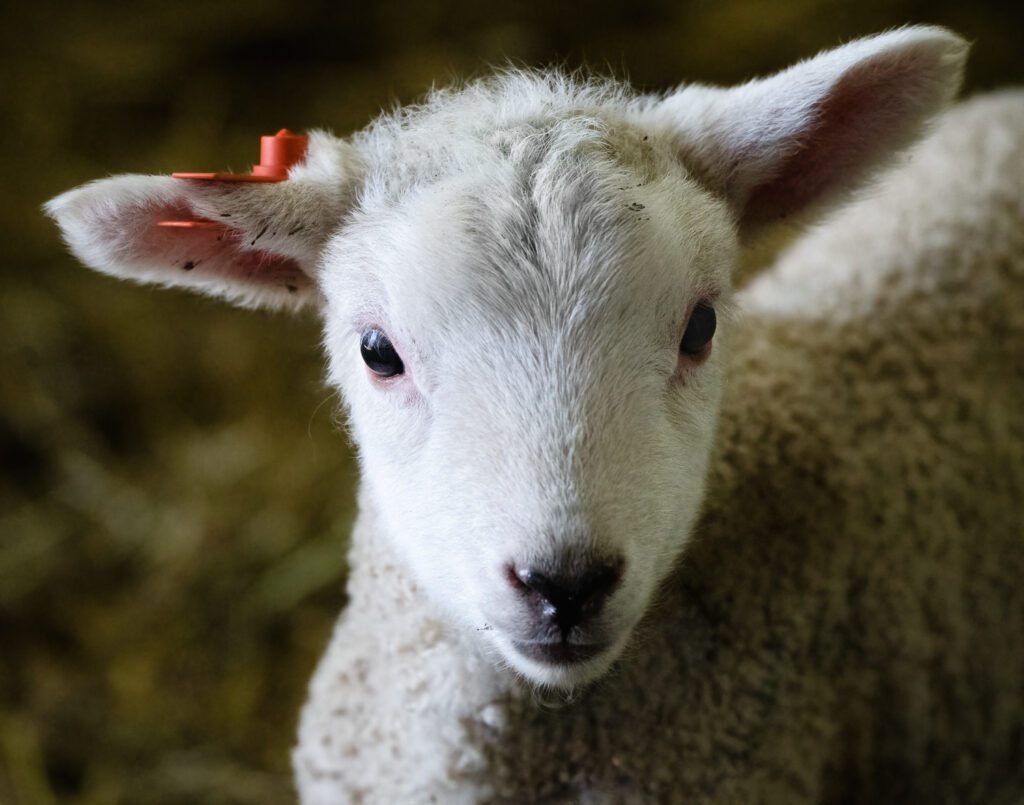
We also obtain two fecal samples from individual ram lambs for fecal egg count (FEC) analysis. In conjunction with FAMACHA scores, the results help in identifying which lambs are “resistant” to barberpole worm, vs which are “resilient”. (Parasite resistance is a highly heritable trait, as is fleece quality). We also measure back length and scrotal circumference at ~ 6-7 months of age. This parameter is highly correlated to their female progeny’s fertility, and any ram or ram lamb with an inadequate scrotal circumference will automatically fail a breeding soundness exam. We refuse to sell any ram lambs for breeding purposes with an inadequate scrotal circumference. All of these data are provided via spreadsheets to prospective ram lamb buyers on a monthly basis.
We cannot guarantee fertility on any of our ram lambs; things out of our control, such as a fever or even hot weather, can temporarily compromise the fertility of rams. We would be happy to arrange to have a breeding soundness exam conducted on rams, though it would add a fair amount to your cost, as the rams would need to be transported to our vet (and possibly held overnight) for conducting the test. Note that to date we have not received reports of any “duds” (knock on wood).
We are currently (2024) asking $500 for our ram lambs that are breeding prospects (the same value they’d have as freezer lambs). Many producers ask for considerably more for their best ram prospects, but we prefer to hold our prices low in hopes of “spreading the word” about Perendales and starting more flocks. We do request a $50 nonrefundable deposit on ram lambs for breeding by the middle of June.
Ewe lambs. We provide the same data for ewe lambs as for ram lambs, with the exception of the two FECs and (obviously) scrotal circumference/back length. For ewe lambs born to ewes 3 years old and older, we do provide the dam’s “productivity” ranking, defined as the cumulative adjusted 60-day weight, summed over the course of two years.
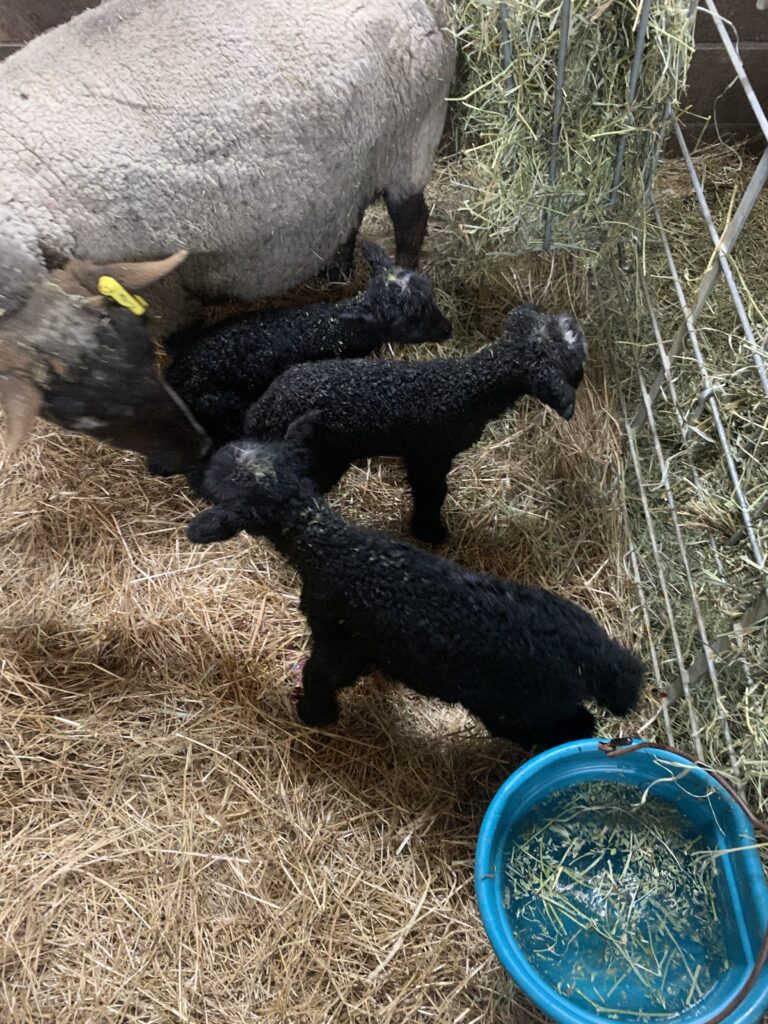
For ewe lambs collected at weaning (~ July), we are currently (2024) asking $300 each (more if held longer).
Yearling ewes. Every year I hold back about 10 of my best ewe lambs (based on maternal productivity and a desire for a diverse gene pool); they become my training group for my Border collies. Once they receive their first shearing at ~ 1 year of age, I can also evaluate the quality of their fleeces (based on micron testing and visual examination of fleece quality). In a normal year, that will leave me with four I’ll select as replacement ewes; the remaining half-dozen will be offered for sale. For yearling ewes, we offer data pertaining to fleece analysis, dams’ maternal productivity, and monthly weights through their first autumns.

For yearling ewes collected when the younger lambs are weaned, we are currently (2024) asking $350 each. We are willing to hold them through the fall to sell as “exposed” ewes for an additional cost. We cannot guarantee pregnancy, but we do use marking harnesses on our rams. Virtually all of the ewes in our breeding group are typically marked within their first cycle plus a few days (maiden rams sometimes seem to miss a few ewes in heat the day they’re turned in with them). We keep rams in with ewes for two full cycles, then a week off, then ~ three weeks with a “backup” (proven) ram. We will not sell any ewe as “exposed” if marked by the cleanup ram. Our vet recommends that exposed ewes not be transported during their first 30-45 days of pregnancy, which roughly corresponds to the date when the backup ram is removed.
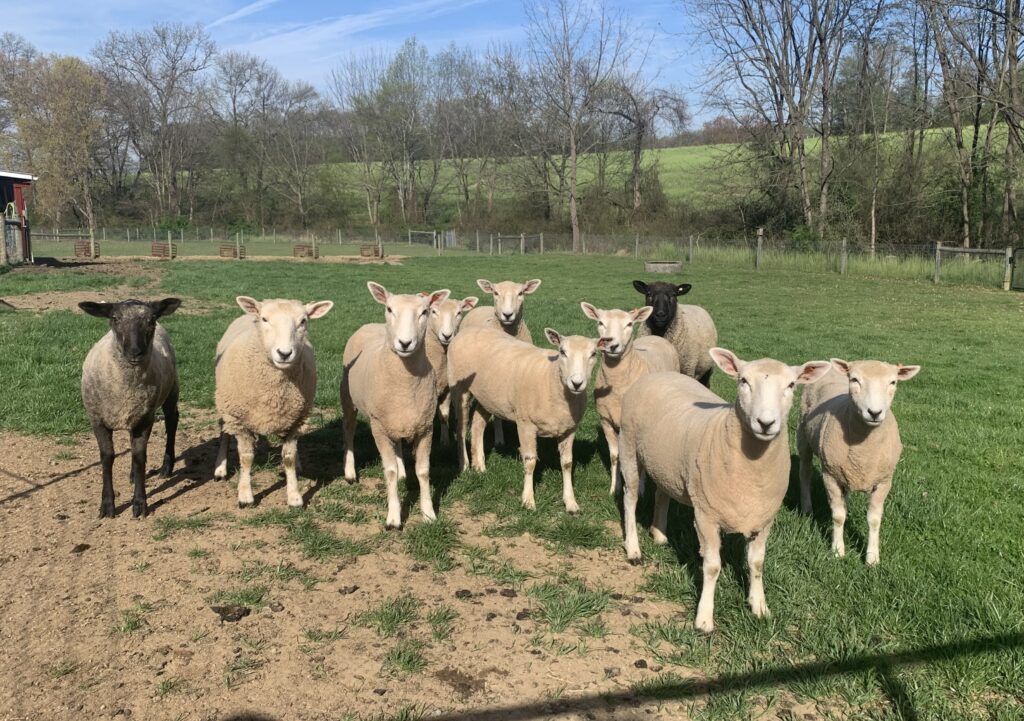
We cannot guarantee that all ewes sold as “exposed” will produce live lambs, owing to factors out of our control (such as infection by toxoplasmosis, Chlamydia, or Campylobacter, or Cache Valley Virus). We have only ever (knock on wood) lost two lambs to Campylobacter that we know of, and have not (to our knowledge) lost lambs to the other agents mentioned. We are happy to have our vet come to do pregnancy testing (by blood) at your expense.
Adult ewes. We will occasionally have adult ewes for sale of prime breeding age (typically ~ 4 years old). These are not cull ewes, but ewes that have proven themselves to be easy lambers and excellent mothers, but who (in most cases) have produced singles two years running and so rank at the bottom of our “productivity” rating. In other cases we are selling them simply because they are at the low end of the % Perendale in our flock (but they are still experienced dams, proven easy lambers and excellent mothers). If you are new to sheep and lambing, consider purchasing one of these! Many have been known to go on to produce multiples.
All adult ewes sold in Fall 2022 lambed successfully the following spring. Of 8 ewes sold to one individual, six had twins, and two had singles.
We are currently (2024) asking $350 for each of these adult ewes, more if kept until ~ December to be sold as exposed ewes. As with the yearling ewes, we cannot guarantee that all ewes sold as “exposed” will produce live lambs, owing to factors out of our control (such as infection by toxoplasmosis, Chlamydia, or Campylobacter, or Cache Valley Virus). We have only ever (knock on wood) lost two lambs to Campylobacter that we know of, and have not (to our knowledge) lost lambs to the other agents mentioned. We are happy to have our vet come to do pregnancy testing (by blood) at your expense. Contact us for details; the additional cost for us to hold ewes for breeding may well be less than you’d spend on a ram lamb (unless you’re seeking to buy more than half a dozen ewes).
Artificial Insemination. We have an agreement with one of the top Perendale breeders in NZ to import semen from two unrelated rams to use during Fall of 2024. We will have extra straws; if you leave your adult ewes with us, we would be happy to arrange for them to be inseminated by our reproductive vet, at an additional cost. When we last had AI done on our ewes (fall 2020), we achieved an ~ 80% conception rate (7 lambs out of the five ewes inseminated, four of which lambed). Contact us if this is an option you might find of interest, and we can provide more details.
Wethers. We do not ordinarily wether (neuter) our ram lambs; it’s impossible to tell at birth which will turn out to be the best options for breeding stock. Nevertheless, we are willing (if arrangements are made ahead of time) to wether late-born ram lambs, as they are unlikely to catch up in size with the rest of their cohort. If you are interested in Perendale sheep for a nonbreeding fiber flock, consider wethers – they typically have the nicest fleeces of all. Wethers are also useful as “buddies” for intact rams (who should never be kept alone).
